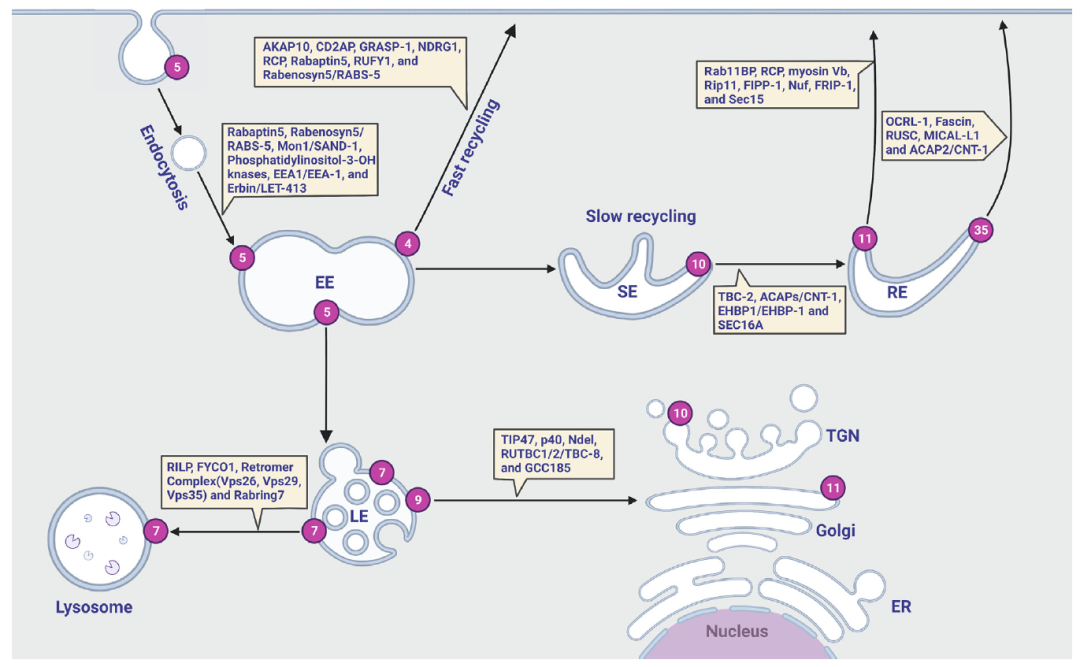Rab GTPases: The principal players in crafting the regulatory landscape of endosomal trafficking written by Prof. Anbing Shi's team has recently published by Elsevier B.V. on behalf of Research Network of Computational and Structural Biotechnology. Dr. Jing ZHANG at Department of Biochemistry and Molecular Biology, School of Basic Medicine, is the first author.

Rab GTPases are monomeric GTP-binding proteins of approximately 200 amino acids in all eukaryotic cells. The human genome encodes more than 60 Rabs, while there are only 31 Rab-like genes in C. elegans. Furthermore, Rab isoforms involved in various endocytic transport can be produced by selectively splicing Rab genes. Upstream regulators control the activity of Rab proteins, which then direct downstream effector proteins to perform specific functions. Irregular Rab-mediated endocytic steps can cause aberrant distribution of functional proteins, leading to physiological malformation and diseases.
The GTP-bound active form of Rab exerts its regulatory role in various ways by recruiting effectors. Multiple types of Rab effectors have been identified, including tether complexes, motor proteins and adapters, and proteins that mediate vesicle membrane fusion. Recent researches reveal that Rab4, Rab5, Rab7, Rab9, Rab10, Rab11, and Rab35 have been associated with endocytic trafficking. These Rabs are located in different endosomes or at different positions in the same endosome, where they regulate different steps of endocytic trafficking independently or cooperatively. Of note, post-translational Rab modifications, such as phosphorylation, can regulate the interaction of Rabs with GDI, GEF, GTPase-activating proteins (GAPs), and effector proteins.
This paper summarizes and analyzes the latest findings of the international academic community on the regulatory functions and mechanisms of Rab endocytic transport, puts forward some unresolved questions in this field, and indicates the direction for follow-up work.